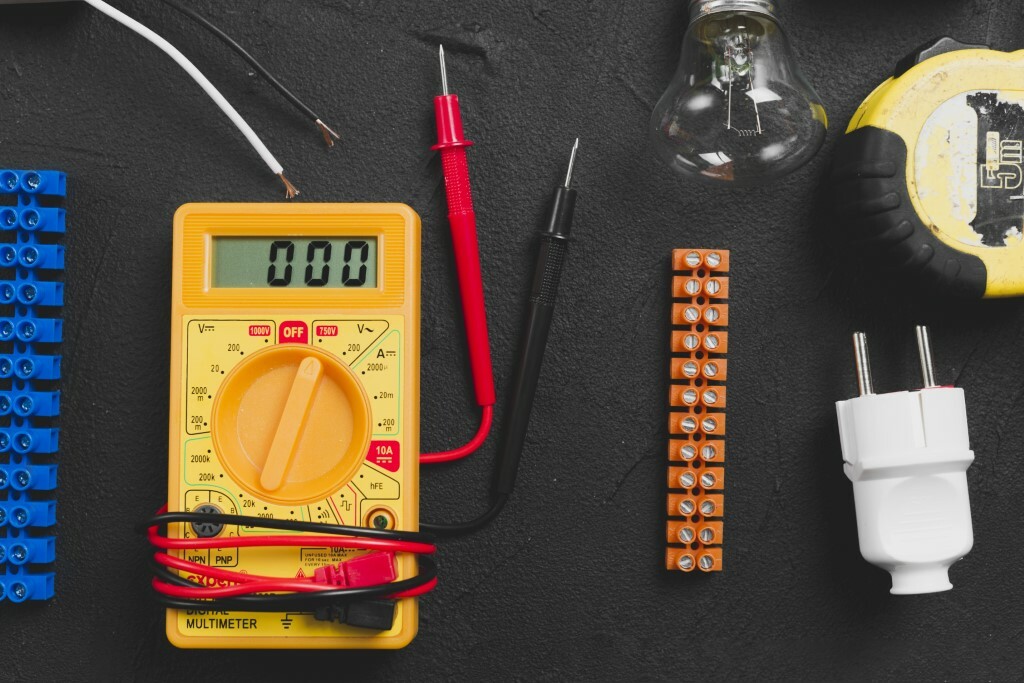When installing and maintaining electrical installations, due attention should be paid to measuring the metal connection of grounding lines, to ensure proper functioning, it must be good enough. Metal bond characterizes the amount of resistance between the transition contacts of the grounding buses and wires. Measurement and verification is the work of the electrical laboratory specialists. Let's see what results the measurement of the metal connection should give.
Content:
- Why take a measurement
- Verification method
- Nuances
Why take a measurement
Grounding is the foundation of safety in electrical installations and outlets. All electrical appliances and apparatus must be grounded. This is to avoid electric shock in an emergency. Checking the metal connection is necessary in order to make sure that all grounding lines are in good contact.
The results of the performed check are recorded in the protocol of measurements of the metal bond. You can see a sample of its filling in the photo below. After that, conclusions are drawn about the general condition of the contacts with grounding and, if necessary, problems are eliminated.
Maintaining normal metal bonds allows:
- Avoid electric shock to both electrical workers and others.
- Eliminate hot contacts, reduce the risk of fire.
- Reduce energy leakage (contact heating).
Why this procedure is needed, we examined, let's find out how it is carried out.
Verification method
Contact with main ground bus can be bolted or welded. Checking the metal connection requires an accurate instrument - a milliohmmeter capable of measuring values of 0.01 ohms and more accurate, but not vice versa. The measurement is carried out with a multimeter, if the latter meets the accuracy and sensitivity class. The devices must be verified. It will not be possible to check with an ordinary dial-up, it will show the presence of a contact, but its quality will remain unknown.
The verification and measurement of the metal bond begins with an external examination of the entire installation, the main focus is on:
- The presence of breaks in the grounding busbars and wires. They can crack, tear, corrode, and so on.
- The quality of the bolted connections. All bolts must be securely tightened, and the bars and cable lugs must be secure, i.e. should not move with any applied effort.
- The quality of welded joints. They are additionally tapped with good, but not too strong hammer blows. This is done in order to detect cracks, the main thing is not to damage the serviceable components.
How is the check done? Each metal structural element must be grounded:
- racks and metal frames;
- bearing elements;
- marching stairs;
- lifting mechanisms;
- trays in which the wires are located;
- cable galleries;
- electrical panels;
- welding stations;
- flap doors and so on.
In order to measure the resistance, the first probe is placed on the main grounding bus, usually it is marked in green paint with yellow short stripes, and the second on a metal metal bond with which they plan to measure. There should be a minimum number of connections from the end node or mechanism to the GSP.
The resistance of one transition contact must be 0.01 Ohm, its allowable excess is 20%. If there are several transition contacts from the measured element to the main grounding bus, then their total resistance should be no more than 0.05 Ohm. If the measurement results differ from the standardized ones, the contact should be improved.
For bolted ones - either only broaching, or disconnecting, cleaning the adjacent planes and broaching with bringing the resistance to normal, if the previous one did not help. If metal elements are connected not by buses, but by a flexible wire, you should also check the wire for breaks, because the resulting resistance to metal bonds in this case increases. Welding connections must be restored. After these procedures, you need to check the resistance again.
The standards for measuring metal bonds and their results are considered in detail:
- PUE-7, section 1.7;
- PTEEE, p.p. 26, 28;
- GOST R 50571.16;
- GOST 12.2.0-75, p. 3.3.7;
Nuances
Measurement of the metal bond is carried out immediately after installation, right before start-up and operation, and then, at intervals of 3 years, during routine tests and maintenance. Together with the check, as well as when the season changes, when heating and excessive humidity are possible, check the insulation resistance of cables and electrical machines.
Check the quality of the contact and measure it transition resistance using a simple household multimeter such as DT830 and the like will not work. In the region of low resistances, they either do not measure at all (up to tenths, but not hundredths of an Ohm), but only one resistance between the probes reaches 1 Ohm, and sometimes even exceeds. There is no need to talk about accuracy here.
Sometimes, in order to measure the quality of a contact, devices are not needed, since its destruction is obvious. In extreme cases, it comes to the point that you can measure its temperature by hand, if it warms up, it means that it needs prevention and subsequent measurements and checking with a milliohmmeter.
Finally, we recommend watching the video, which clearly shows how to check the presence of a metal connection with the device:
Checking the metal connection is very important for the safety of life of the company's employees and residents of the house. Due to poor grounding in the sockets or its complete absence, there is a possibility that a potential appears on the device case. And when a person touches him, either electrical injury or irreparable damage will occur. We hope the information provided was useful and interesting for you!
We also recommend reading:
- How to check the operability of a difavtomat
- Measuring earth resistance
- What is the zero bus for?
- How to use a megohmmeter

